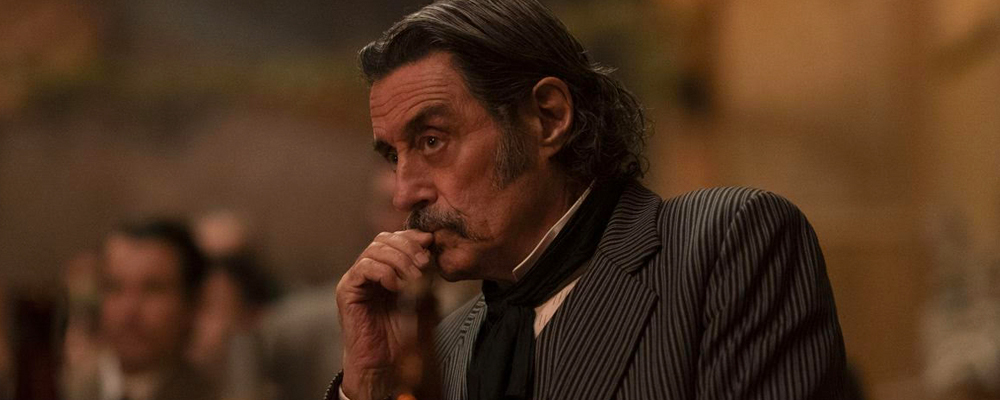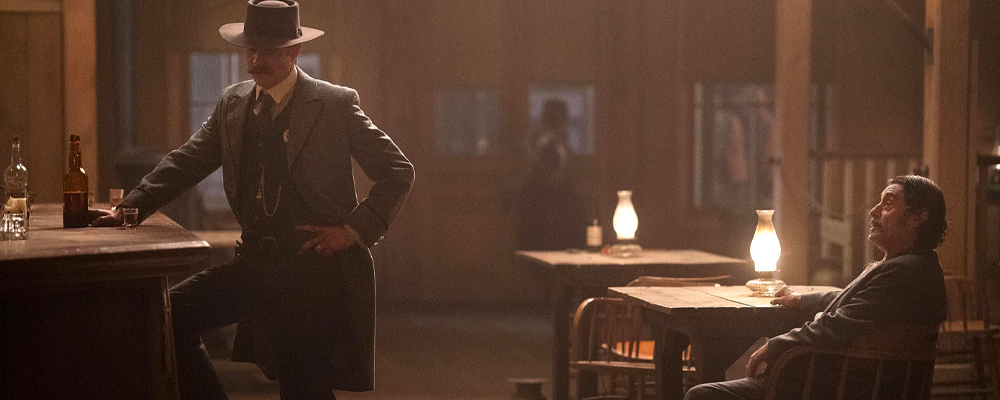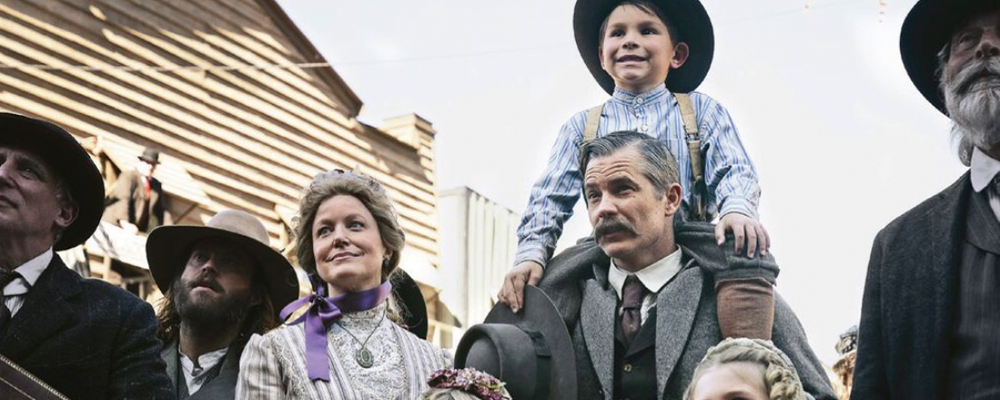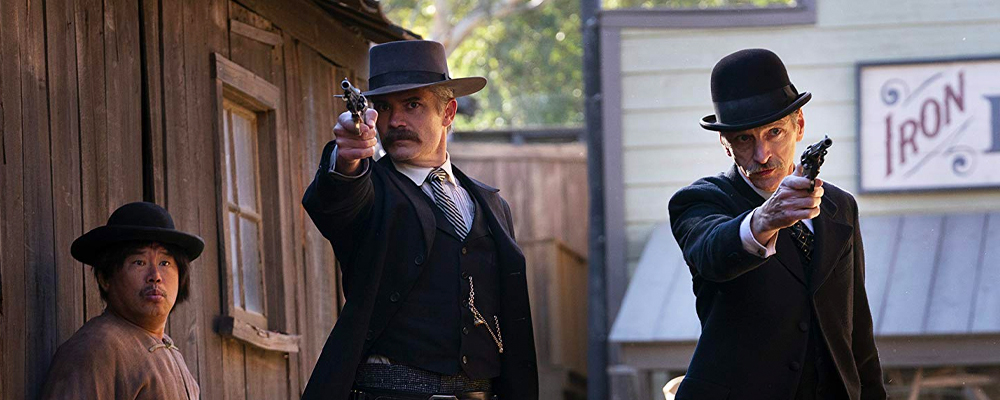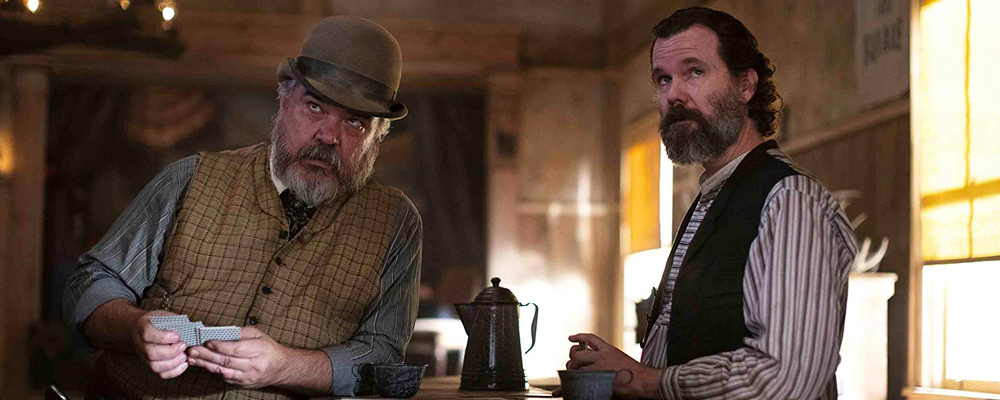‘Deadwood: The Movie’ Finally Gives the Cult Series a Worthy and Eloquent Closure
Alci Rengifo
With whiskey-tinged fire and blood “Deadwood: The Movie” arrives after over a decade of expectation. Rarely do any titles get such an opportunity for a comeback. It was in 2006 that “Deadwood,” the strange, profanely eloquent western, met its end at HBO after only three seasons. The creation of TV bard David Milch, the show has lingered in the memory of its fans or those who have discovered it via DVD and streaming. Milch’s vision turned a 19th century South Dakota mining town into a gritty portrait of the roots of the United States. Most notably, it combined a rich ear for language with violence like few dramas before or since. For years rumors swirled of a movie to give the story its delayed dues, now we have it and it is a thing of ferocious beauty.
It is 1889, ten years since the events from the final season. After we see a hard-drinking Calamity Jane (Robin Weigert) ride into a town we catch up with the notables of Deadwood. Seth Bullock (Timothy Olyphant) remains the town’s chief lawman, and owner of a local hotel. He’s also a father, raising a loving family with wife Martha (Anna Gunn). Still running the Gem Saloon, overseeing its working ladies and denizens, is Al Swearengen (Ian McShane). Al’s looking a bit pale however, and Doc Cochran (Brad Dourif) worries it might be his liver. But an old foe from the past returns, the wealthy industrialist George Hearst (Gerald McRaney), here to celebrate South Dakota officially becoming a state. Scourge of Al and the town, Hearst now has political power due to his status as a junior senator. Under the guise of bringing to Deadwood the latest in modernity, telephone lines, Hearst wants to buy land belonging to Charlie Utter (Dayton Callie). Hearst is also enraged to discover that Trixie (Paula Malcomson), the prostitute who nearly killed him years ago, is alive. She’s now pregnant and married to Bullock’s right hand, Sol Star (John Hawkes). Hearst makes Al an offer- support his bid for Utter’s land and he won’t unleash revenge.
“Deadwood: The Movie” is a fitting revival and also a haunted work of memory. It gains a particular meaningfulness following David Milch’s diagnosis of Alzheimer’s disease. Milch, creator of “NYPD Blue” before crafting “Deadwood,” wrote with the kind of prose you would expect from Herman Melville, if he had been a TV writer. His wonderful mind now fading, Milch’s script for this film is a vibrant return to characters he knows so well, while reflecting on the passage of time. Amazingly nearly all the original cast returns with the exception of the late Powers Boothe. The early scenes have the nostalgic force of returning to a familiar place and finding familiar faces now a little more aged. There’s Jewel (Geri Jewell), older and with a new back brace, still cleaning after Al, Dan (W. Earl Brown) has grey hair now but is still Al’s key enforcer, always on the lookout, and the bafoon E.B. Farnum (William Sanderson) is incredibly still mayor of Deadwood, but it was always a meaningless title anyway. The writing wisely knows that life doesn’t always change people. It may just slow them down a bit. Even Mr. Wu (Keone Young) is still around, running things in the Chinese district and now using a sharp grandson to translate when meeting with Al (and leaving him tea for his ailing liver). The past is however hurtfully gone for bank owner Alma Ellsworth (Molly Parker), who returns with daughter Sophia (Lily Keene). When her eyes see Bullock she is immediately transported back to their romance from years before, and while he also feels a wave of feeling, what once was can never be again. A powerful sense of time’s passage is established with the use of intercut shots from previous seasons during specific glances or moments, reminding us of what is being remembered. Al looks at a stub in his hand, and we’re taken back to that moment when Hearst sliced off a finger.
But it’s not all memories and reunions. Milch and director Daniel Minahan have made a visceral western, one of the best recent offerings in the genre you can even say. “Deadwood: The Movie” is true to its name, delivering not a mere TV revival but something cinematic. The cinematography by David Klein casts this world in a baroque glow, with rich candlelight and dynamic, widescreen frames. Milch, perhaps sensing time slipping away, writes arias for these characters that reach the realms of profane literature. Expletives are used with a specific rhythm and poetics are thrown in-between stark observations. Al, sitting next to a new, young prostitute under his wing gazes out a window and says, “It’s a sad night, something’s afire. Christ, I do have feelings.” The scent of something burning is someone setting Hearst’s lumber alight in the distance, in revenge for his first murder after returning to town. This was in essence always a story about America, about its roots. Hearst represents unbridled capitalism coming to change everything, putting a price on land and people. When he doesn’t get his way he brings in thugs to threaten and kill anyone who gets in his way. He can’t forgive that Trixie is still alive, especially because Al had tricked Hearst in the show’s final season, with someone else’s corpse into believing she had been taken care of. Milch seems to be channeling a contemporary mood in a near-lynching scene where the townspeople unleash their fury on what they perceive to be the useless, abusive rich. But Minahan and Milch also have some fun by referencing the arrival of modernity. People have to form lines to use the town’s first telephone and Hearst lies on his hotel room floor listening to another key invention, a gramophone.
“Deadwood: The Movie” seamlessly flows from character-driven moments to sudden violence. Rich passages where people converse and think can give way to a shootout or brawl. Conversations usually begin with shot glasses being filled. A wedding near the end has an endearing beauty, then Hearst walks in and dread takes over. The performances are all first rate. Timothy Olyphant slips right back into becoming the morally stern, righteous Bullock, unafraid to put cuffs on Hearst. Robin Weigert’s Calamity Jane is a wandering force of nature, pining after former lover Joanie Stubbs (Kim Dickens), but still lethal with a pistol. As always the show stealer is Ian McShane’s Al Swearengen, now debilitated, yet headstrong and always thinking, capable of tenderness and cold calculation. He, Hearst and Bullock embody how the American frontier was shaped by people such as these, full of violence and contradictions, corruption and willpower.
Other showrunners hoping to resurrect a past passion project should take notes from “Deadwood: The Movie.” This is how Chris Carter should have revived “The X-Files” for example. Then again David Milch was always one of a kind, a brilliant showrunner with the gift of a literary powerhouse. Here we have his farewell, full of poetry and grit. Thankfully HBO allowed this project to happen. It not only re-introduces audiences to the world of a great show, it’s quite simply great art.
“Deadwood: The Movie” premieres May 31 at 8 p.m. ET on HBO.

